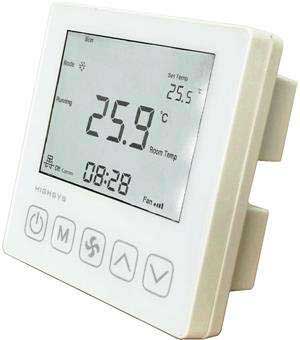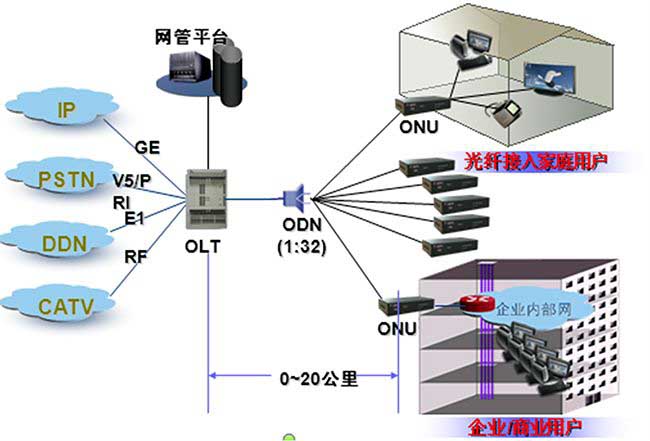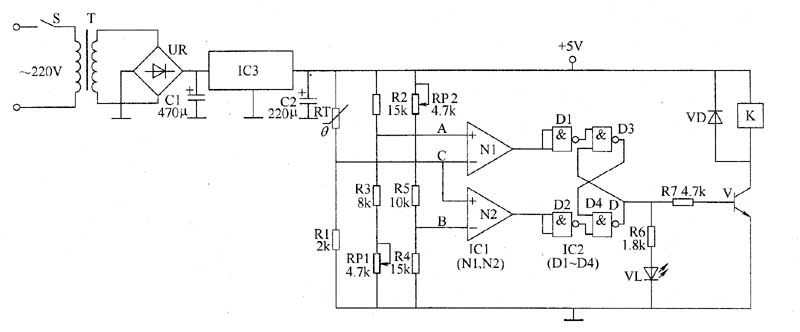Working Principle of Mechanical and Electronic Thermostats
1. Thermostat - Introduction
The thermostat, known as the temperature controller (Thermostat), also known as the temperature control switch, temperature protector, is divided into mechanical and electronic two categories. It is mainly based on the temperature change of the working environment, physical deformation inside the switch, resulting in some special effects, resulting in a series of automatic control components for conduction or disconnection. Or the electronic components can provide temperature data to the circuit at different temperatures and different working states for the circuit to collect temperature data.

2. The working principle of the thermostat
The working principle of the thermostat is to automatically sample and monitor the ambient temperature through the temperature sensor. The control unit starts when the ambient temperature is higher than the control set value, and the control hysteresis can be set. The thermostat consists of four major mechanisms: conversion display mechanism, setting mechanism, comparison computing mechanism and output mechanism. When the temperature sensor converts the field temperature into an electrical signal and transmits it to the thermostat, the thermostat's conversion display mechanism converts the electrical signal into a digital display or analog indication. And internally, the set value of the setting mechanism is compared with the comparison mechanism, and then output to the controller through the output mechanism, and then the controller controls the heater/cooler.

3. Thermostat function
In most cases in Europe, the thermostat is a must-have for wall-mounted furnaces. The two are delivered to the user at the same time, and the thermostats are mostly intelligent thermostats. The main functions of the thermostat are divided into the following categories:
Convenience: Automatically adjust the wall-hung boiler to advance or delay the switch every day, eliminating the need for manual operation, which is most necessary for office workers;
Comfortable: Every morning, midnight and evening, the room temperature is adjusted automatically at different time intervals to avoid the embarrassment of waiting for the room to warm up and freeze after getting up in the morning and returning home from work.
Gas saving: The extensive water temperature control is changed to advanced and accurate room temperature control, and the fixed room temperature is operated on demand in different time periods, so the open day and night heating is not needed.
rest assured: When the room temperature is too low, the boiler is forced to start, and only a small amount of gas is needed to safely protect the room from frost.
In fact, in our life, the application of the thermostat is no stranger. For example, the air conditioner uses the working principle of the thermostat to cool in the summer and warm in the winter!

The thermostat, known as the temperature controller (Thermostat), also known as the temperature control switch, temperature protector, is divided into mechanical and electronic two categories. It is mainly based on the temperature change of the working environment, physical deformation inside the switch, resulting in some special effects, resulting in a series of automatic control components for conduction or disconnection. Or the electronic components can provide temperature data to the circuit at different temperatures and different working states for the circuit to collect temperature data.

2. The working principle of the thermostat
The working principle of the thermostat is to automatically sample and monitor the ambient temperature through the temperature sensor. The control unit starts when the ambient temperature is higher than the control set value, and the control hysteresis can be set. The thermostat consists of four major mechanisms: conversion display mechanism, setting mechanism, comparison computing mechanism and output mechanism. When the temperature sensor converts the field temperature into an electrical signal and transmits it to the thermostat, the thermostat's conversion display mechanism converts the electrical signal into a digital display or analog indication. And internally, the set value of the setting mechanism is compared with the comparison mechanism, and then output to the controller through the output mechanism, and then the controller controls the heater/cooler.

3. Thermostat function
In most cases in Europe, the thermostat is a must-have for wall-mounted furnaces. The two are delivered to the user at the same time, and the thermostats are mostly intelligent thermostats. The main functions of the thermostat are divided into the following categories:
Convenience: Automatically adjust the wall-hung boiler to advance or delay the switch every day, eliminating the need for manual operation, which is most necessary for office workers;
Comfortable: Every morning, midnight and evening, the room temperature is adjusted automatically at different time intervals to avoid the embarrassment of waiting for the room to warm up and freeze after getting up in the morning and returning home from work.
Gas saving: The extensive water temperature control is changed to advanced and accurate room temperature control, and the fixed room temperature is operated on demand in different time periods, so the open day and night heating is not needed.
rest assured: When the room temperature is too low, the boiler is forced to start, and only a small amount of gas is needed to safely protect the room from frost.
In fact, in our life, the application of the thermostat is no stranger. For example, the air conditioner uses the working principle of the thermostat to cool in the summer and warm in the winter!






